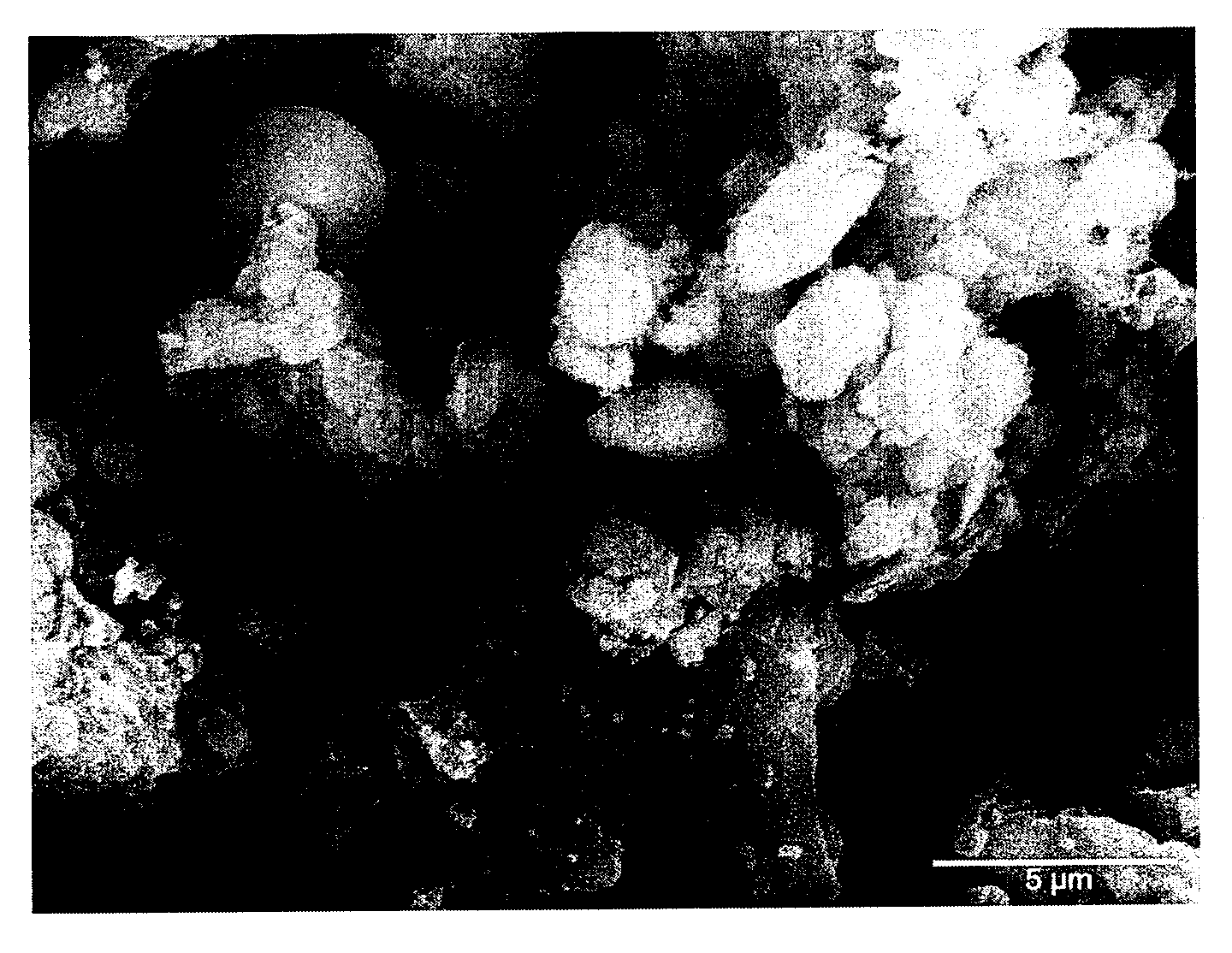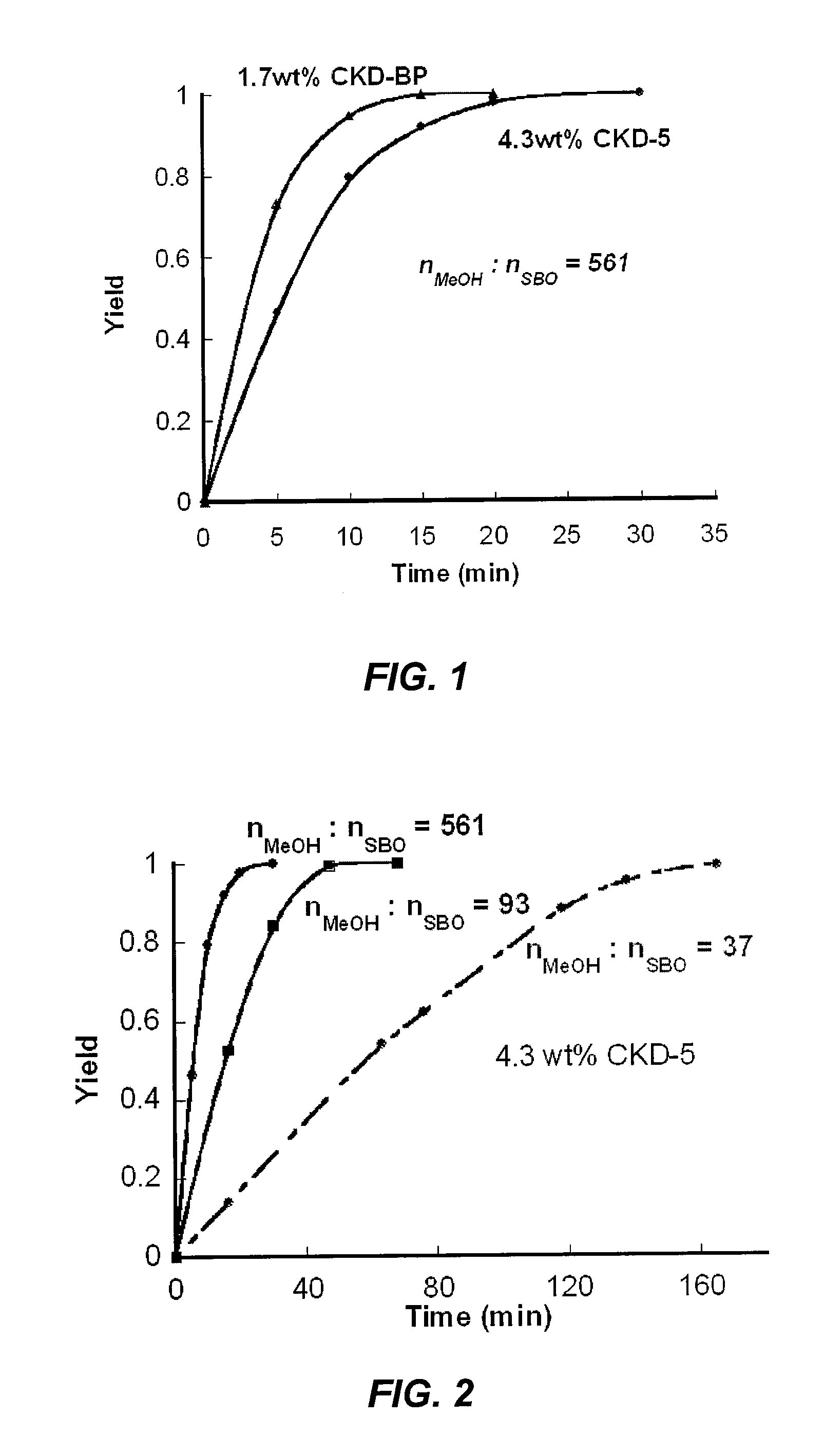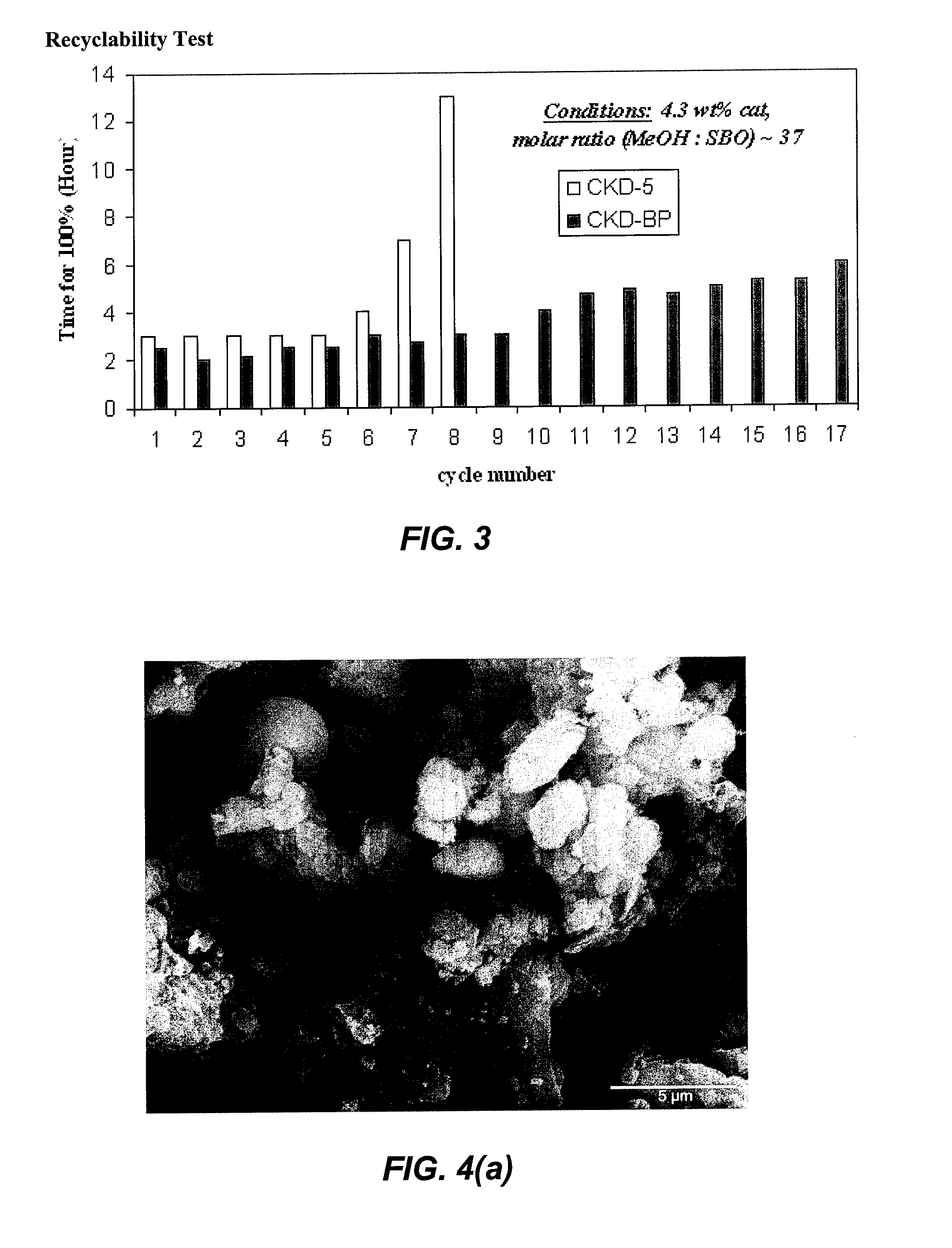Solid catalyst system for biodiesel production
a biodiesel and solid catalyst technology, applied in the direction of solid waste management, metal/metal-oxide/metal-hydroxide catalysts, fatty acid chemical modification, etc., can solve the problems of current biodiesel preparation process not allowing the recycling of catalysts, high energy consumption, and high cost of dispersing, so as to achieve faster reaction speed and high contact area
- Summary
- Abstract
- Description
- Claims
- Application Information
AI Technical Summary
Benefits of technology
Problems solved by technology
Method used
Image
Examples
example 1
Soybean Oil Transesterification by Cement Kiln Dust (CKD)
[0075]A typical procedure for the transesterification reaction was as follows. Methanol (180 mL, 4.44 mol) was added to 0.3 g of cement kiln dust catalyst, and the resulting suspension was stirred for 30-40 minutes under refluxing conditions to activate the catalyst. Soybean oil (6.9 g, 7.9 mmol) was then added to the catalyst composition mixture, and the reaction was stirred under refluxing conditions (˜64.7° C.) for 30 minutes. The weight percentage of solid catalyst to oil was 4.3 and the volume ratio of methanol to oil was 24. Sample aliquots were withdrawn from the reaction mixture at various time intervals. The aliquots were analyzed by 1H NMR in CDCl3. After the reaction was complete, the reaction mixture was filtered through a glass frit and rinsed with a minimal amount of methanol. ICP-MS analysis showed that the crude product mixture (biodiesel, glycerin, and methanol) contained about 20-140 ppb of calcium ions. The ...
example 2
Effects of Relative Methanol Quantity
[0079]CKD-5 was used as the catalyst in this Example. FIG. 2 illustrates the effect of the amount of methanol in the biodiesel production reaction. As shown in FIG. 2, use of higher amounts of methanol resulted in a faster reaction. The overall reaction was complete in 30 minutes when the molar ratio of MeOH to soybean oil (“SBO”) was set at 561. However, 1.25 hours and 3 hours were required to obtain 100% conversion when the molar ratio nMeOH:nSBO was 93 and 37, respectively. Despite a slower reaction with lower methanol ratios, the molar ratio nMeOH:nSBO=37 was used as a standard procedure to evaluate the potential of this reaction under highly economical conditions (e.g., lower methanol loading).
[0080]2.1. CKD Catalyzed Biodiesel Production of Soybean Oil: 561 eq. MeOH.
[0081]Cement kiln dust (CKD-5) (0.3 g) was added to 180 mL of methanol, and the mixture was stirred at 65° C. to uniformly disperse the catalyst. After stirring about 30 minutes...
example 3
Recyclability Tests of the Cement Kiln Dust (CKD) Catalyst
[0086]An important advantage of using heterogeneous materials as catalysts is the ability to recycle and reuse the solid catalyst. Catalyst recycling was achieved by simple filtration of the mixture at the end of the reaction. The recovered catalyst was used again under the same reaction conditions without any purification. The catalyst CKD-BP could be reused up to 17 times for soybean oil transesterification reaction (FIG. 3). Remarkably, there was no significant loss of activity in each successive reaction. Due to different chemical components and microstructure, CKD-5 can be reused up to 8 times for soybean oil transesterification reactions under same conditions. In comparison with the recyclability of other solid metal oxide catalysts, the CKD catalysts showed an unprecented stability and recyclbility for biodiesel synthesis.
[0087]For a typical example, 1.2 g cement kiln dust (CKD-5) was added to 48 mL methanol, and the m...
PUM
| Property | Measurement | Unit |
|---|---|---|
| temperature | aaaaa | aaaaa |
| pressure | aaaaa | aaaaa |
| temperature | aaaaa | aaaaa |
Abstract
Description
Claims
Application Information
 Login to View More
Login to View More - R&D
- Intellectual Property
- Life Sciences
- Materials
- Tech Scout
- Unparalleled Data Quality
- Higher Quality Content
- 60% Fewer Hallucinations
Browse by: Latest US Patents, China's latest patents, Technical Efficacy Thesaurus, Application Domain, Technology Topic, Popular Technical Reports.
© 2025 PatSnap. All rights reserved.Legal|Privacy policy|Modern Slavery Act Transparency Statement|Sitemap|About US| Contact US: help@patsnap.com



